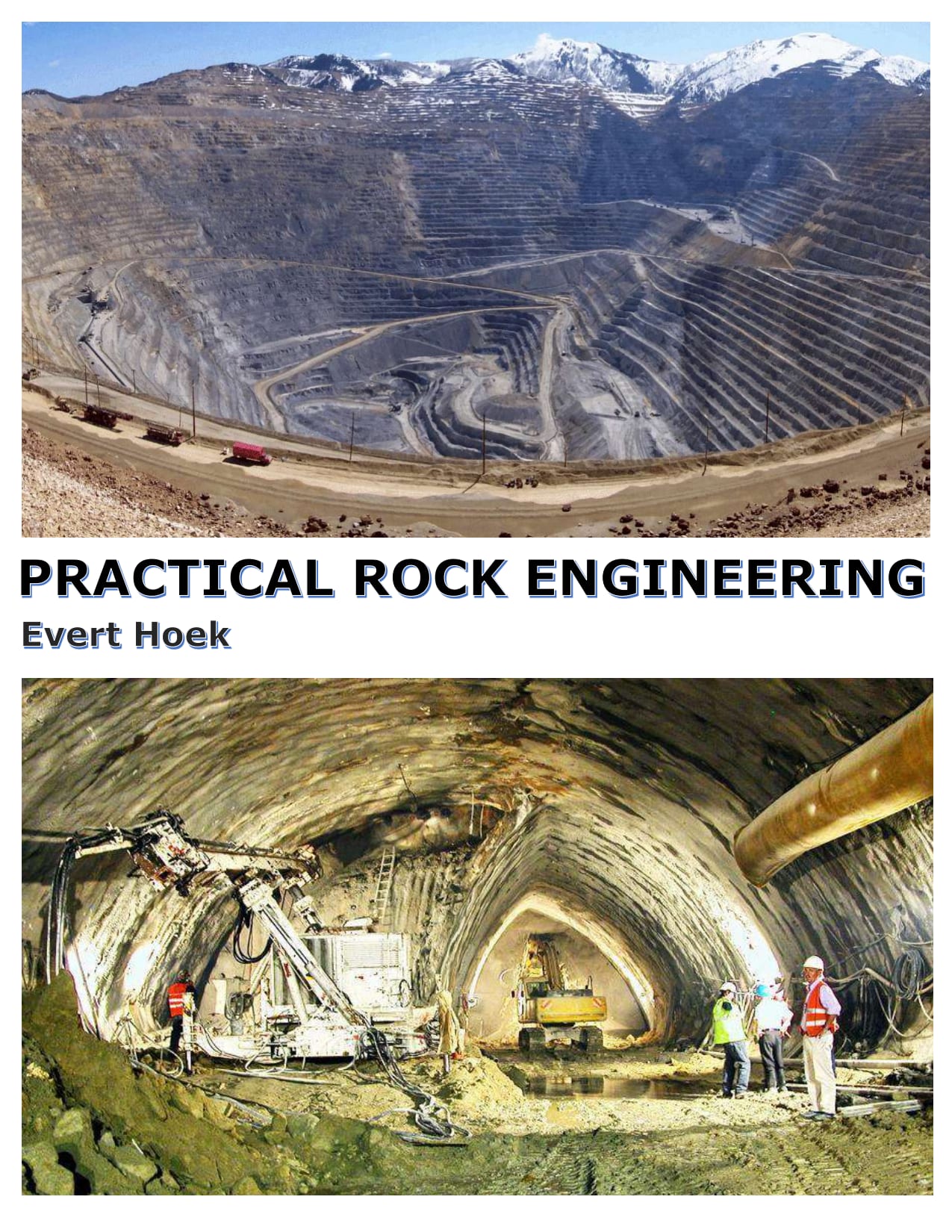- Z-POSTS (5)
- Z-NOTES
- Z-EVENTS
- DESCRIPTION
- Item 1
04 Geotechnics
Add Z-POSTZ-POSTS is a public space. The content written here will be visible to the ZVENIA community.
ZVENIA Mining .04/05/2024Video Lecture Series: Explore six exclusive video lectures covering a variety of topics in Rock Mechanics Engineering.
The Development of Rock Engineering pProvides a brief history of the field of rock engineering, with a look at a number of interesting case studies and examples.
Credits to RocscienceZVENIA Mining .04/05/2024The notes are intended to provide an insight into practical rock engineering to students, geotechnical engineers and engineering geologists. Case histories are used, wherever possible, to illustrate the methods currently used by practicing engineers. No attempt has been made to include recent research findings which have not yet found their way into everyday practical application. These research findings are adequately covered in conference proceedings, journals and on the Internet.
Source: www.rocscience.com/assets/resources/learning/hoek/Practical-Rock-Engineering-Full-Text.pdf
Credits to Evert HOEK
 Blessing Taiwo03/11/2023
Blessing Taiwo03/11/2023Understanding the effect of drill hole inclination (vertical or inclined) on blast fragmentation.
The inclination of drill holes in blasting operations can have a significant effect on the fragmentation of the rock mass. The choice of hole inclination, whether vertical or inclined, can impact factors such as the size distribution of the blasted rock fragments, the efficiency of the blasting process, and the overall cost and safety of the operation.
Here are some key points to consider:
Vertical Drill Holes:
Vertical drill holes are commonly used in blasting operations.
· They are drilled straight down into the rock, perpendicular to the surface, therefore support high accuracy unlike inclined holes.
· Vertical holes can provide good control over the direction of the blast and are often used when precision is required.
· The blast energy is concentrated in a relatively small area, which can result in a more efficient breakage of the rock as shown in Fig. 1.
· Vertical holes can create a deeper blast pattern, which may be suitable for certain applications, such as bench blasting in open-pit mines.
Inclined Drill Holes:
· Inclined drill holes are drilled at an angle to the vertical (See attached image)
· The angle can vary depending on the specific goals of the blasting operation.
· Inclined holes can help to distribute the explosive energy over a larger area of the rock mass and increase fragmentation volume.
· This can lead to a broader and more even fragmentation pattern.
· The use of inclined holes can reduce the need for secondary breakage, as the rock may break into smaller fragments more easily due to the spreading of the blast energy.
· Inclined holes are often used in controlled blasting techniques, such as pre-splitting, where a narrow, controlled fracture is created before the main blast.
In general, the choice between vertical and inclined drill holes should consider factors such as the rock type, the intended fragment size distribution, the geometry of the blasting area, and safety concerns. Inclined holes can be advantageous for creating a better muckpile profile in some cases, especially in open-pit mining where material needs to be efficiently loaded and hauled. Fragmentation is influenced by various other parameters, including the type and amount of explosives, the timing of the blast, the hole spacing and pattern, and the condition of the rock.
In summary, the choice between vertical and inclined drill holes in blasting operations depends on the desired fragmentation outcome and the specific requirements of the project.ZVENIA Mining .08/06/2023It is well known that the most critical failure surface for a soil with a large cohesion and a small friction angle is a deep circle, whereas that with a small cohesion and a large friction angle is a shallow circle.
Reference:
Marile O, LinkedIn
Huang, Yang H. (2014). Slope stability analysis by the limit equilibrium method.ZVENIA Mining .08/06/2023Tunnelling in rock depends on the ease or difficulty of rock removal when using different tunnel excavation methods.
Excavability depends on the following rock properties:
— Uniaxial compressive strength.
— Hardness and abrasiveness.
— Rock mass fracturing.
— Geomechanical quality indexes.Uniaxial compressive strength and the spacing of discontinuities can be used to differentiate excavation by blasting from excavation by mechanical methods (Figure📸). An estimation of excavability for roadheaders, based on the uniaxial compressive strength, σci, and tensile strength, σt of rock, is as follows:
— Easy to cut: σt/σci 0.1Source : Nabaz Nooralddin, LinkedIn
Source image: Nabaz Nooralddin, LinkedIn - Item 2
04 Geotechnics
Add Z-NOTEZ-NOTES is a private space. The content written here will be visible only to you.
- Item 2
04 Geotechnics
Add Z-EVENTZ-EVENTS is a public space. Events posted here will be visible to the ZVENIA community.
- Item 2
04 Geotechnics
In this module you will have access to the following topics (not exhaustive) :
– Stability
– Rock hardness
– Soil mechanics
– Rock mechanics



